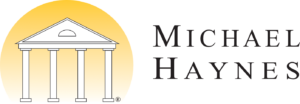Before making a substantial investment in a patent application, it almost always will be worthwhile to obtain a professional patentability search. These searches will attempt to identify pre-existing (“prior art”) publications that describe most or all the major features of the innovative concept, thereby potentially indicating that the concept is not new or inventive.
Timely recognition of the relevant prior art can lead to a reasoned professional determination of unpatentability, thereby helping to avoid wasting money, time, and energy trying to patent what is an unpatentable concept.
Before your company obtains a patent, it will spend many thousands of dollars preparing and filing a patent application that describes and claims the innovative concept. After waiting possibly several years for examination, your company will spend at least several more thousands of dollars prosecuting that patent application to issuance.
So, doesn’t it make sense to verify that your company’s odds of receiving a patent on that concept are reasonably good?
A basic pre-filing version of a professional patentability search typically can be completed within 1 to 10 days, and usually costs between $1500 and $2500.
Yet there are very good reasons to spend considerably more on an initial professional patentability search. Here’s why:
- Although it can run considerably higher, the cost to prepare and file a typical U.S. non-provisional patent application is typically at least $7000 to $10,000 (including government fees), and another ~$2500 if expedited examination is requested (which I nearly always recommend for startups).
- The cost to prosecute a typical U.S. non-provisional patent application to the point where the USPTO’s best available prior art has been revealed, and the applicant decides to abandon the application due to that prior art, is typically at least $4000 and averages closer to $8000.
- Thus, the cost to prepare, file, and prosecute a typical U.S. non-provisional patent application to the point where the applicant chooses to abandon the application is typically at least $11,000 to $18,000, and sometimes considerably more.
- Historically, roughly 25% of all original U.S. non-provisional patent applications have been abandoned during prosecution and without any follow-up application being filed, and therefore each claimed concept did not issue to those applicants in a patent, often because that claimed concept proved unpatentable in the face of USPTO-cited prior art.
- Consequently, one could reasonably justify spending $2750 (25% x 11,000) to $4500 (25% x $18,000), and possibly more, to determine up front that any given concept is unpatentable or not worth patenting, thereby avoiding the costs of preparing, filing, prosecuting, and then abandoning, its corresponding U.S. non-provisional patent application.
Of course, when enforcement of a given patent’s claims is at issue, a considerably larger budget for patentability searching is often justified. For example, assume the owner of a patent is proposing that a licensee pay 2% of its gross sales of a widget that embodies a concept claimed by that patent. Assume also that the gross sales will total at least $5,000,000 per year, and thus the licensee will pay at least $100,000 per year in royalties to the patent owner. Even if there were only a 10% chance that the claims covering the concept are invalid, those odds would justify the licensee spending $10,000 for each year that the licensing agreement is in effect trying to invalidate those patent claims.
Alternatively, depending on the potential life of the agreement, the licensee might spend considerably more on a single attempt to invalidate those patent claims. A patentability search can be a key starting point for those efforts.
